The M2 Art Centre is a multifunctional art space located in Hangzhou, China, which originated from a wedding dress showroom. The initial function setting of the space triggered a reflection on women and their choices in marriage and relationships: Marriage is no longer a default option for everyone in contemporary society but rather a rational choice for individuals to grasp their own lives. Therefore, can a contemporary commercial exhibition space be expanded into a mind-body journey with some psychic touch, providing an opportunity for introspection and contemplation of life before the wedding moment? Can a space imbued with profound meaning serve as a versatile venue in the city, hosting various artistic and design activities? The design team SpActrum and the owner of M2 embarked on an unusual exploration together.
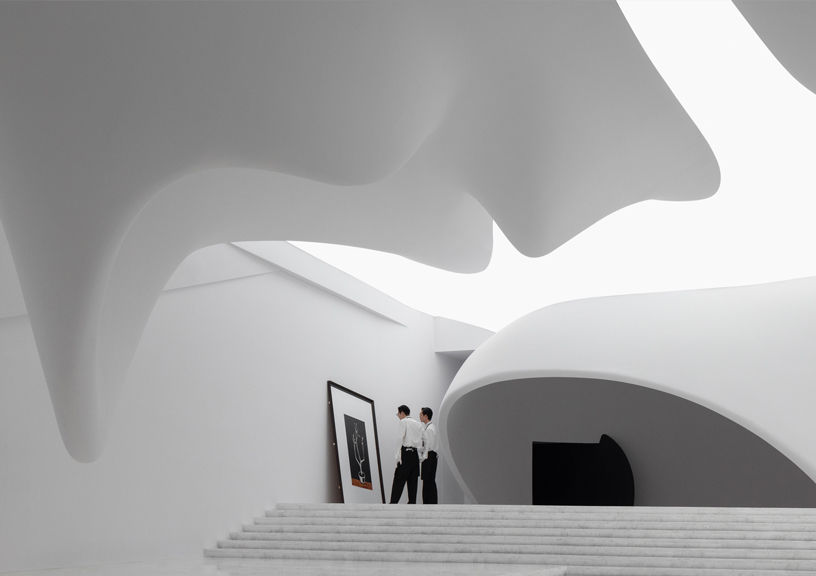
Initial Site Visiting
The site of M2 is located in the plinth of a high-rise office building, and the original space was a gym space with a swimming pool. The spatial sequence of the site begins at the square elevator hall on one side of the main space, followed by the more than 40-meter-long strip-shaped main space, with the floor partially sinking about 1.5 meters and the end being a 10-meter-high space.
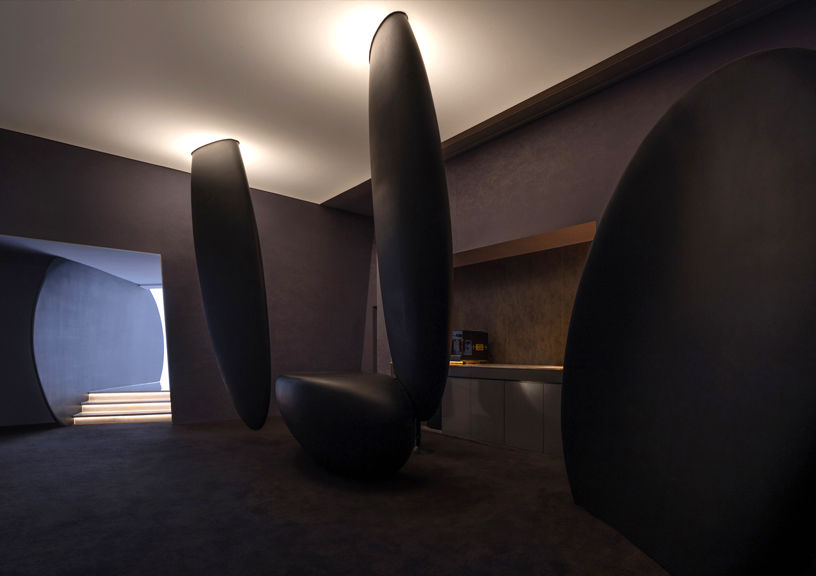
When Yan Pan, the chief designer of SpActrum, initially explored the site, the basic storyline of M2 Art centre had already been outlined based on the preliminary on-site conditions: stepping into the sunken swimming pool, the sense of height in the main space was further stretched, and standing at the end of the pool, looking up at the 10-meter-high end space, Pan instantly felt a strong sense of sacred calling. The strong connection between the designer and the site made it clear that the design of M2 should be based on respect for the power of the place, seeking to express their spatial potentials.
Aesthetic of Transforming Conflicts
In SpActrum’s design philosophy, contemporary everyday expressions are characterised by discreteness, fragmentation, and conflicts. SpActrum believes that rather than avoiding or mitigating these conflicts, the aesthetic of fragmentation and conflicts are the defining characteristics of our time. In non-pure cultural spaces, designers must confront the important challenge of how to appropriately adapt to the functional characteristics of the space while continuing to explore the architecture.
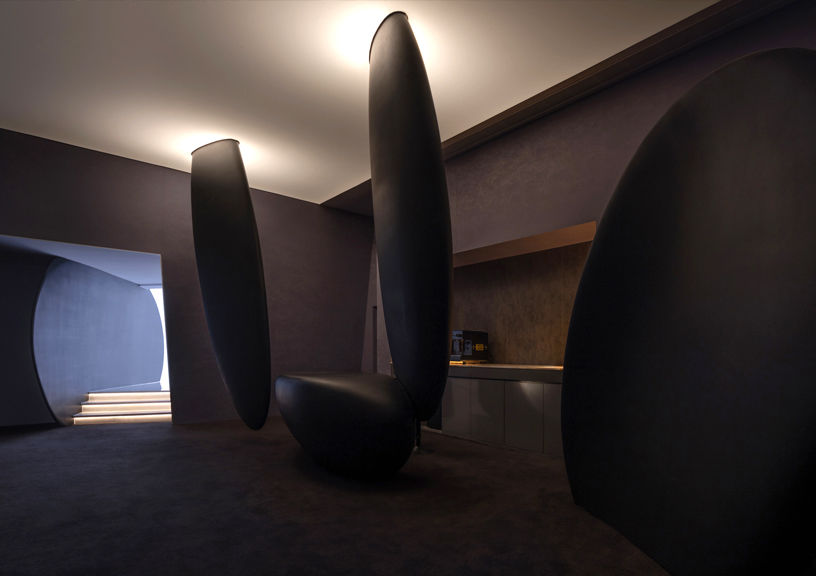
The unique and daring architectural language of M2 Art Centre, along with its atmosphere that evokes a sense of otherworldly sanctity, can be attributed to SpActrum’s profound critical awareness of the multiple conflicts inherent in the project, their creative transformations, and multi-faceted design interventions.
The first conflict faced by M2 arises from the transformation of the original spatial characteristics into new functional requirements. SpActrum chooses to maximise the potential qualities of the original site in order to create a comprehensive artistic space that could accommodate photography, future fashion exhibits, artistic events, and art exhibitions. This approach establishes a symbiotic relationship between the history of the site and the present.
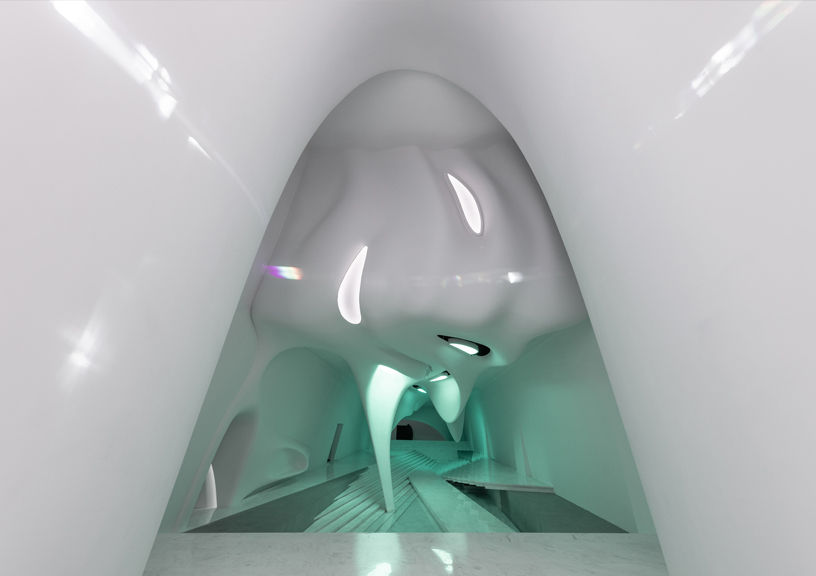
The second conflict emerges from the spatial narrative and the tension between the designer’s understanding of contemporary social conditions. One of the important functions of the new space was to showcase wedding dresses, but in modern society, marriage is no longer a universal experience, but rather a personal choice. SpActrum hopes that the spatial experience at M2 would not be a preconceived indulgence, but rather a journey that would inspire women’s self-awareness and self-care.
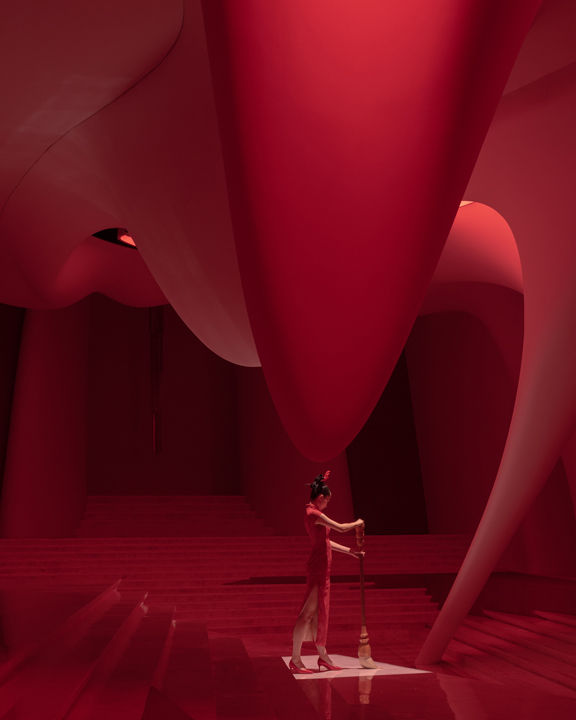
The third conflict is derived from the interpretation of the architectural language within a complex system of values and functions. Should the design strive for a pure geometric language throughout, or should it be informed by a higher-level logic and concept that integrates multiple geometric languages, while also responding and adapting to the original site? While geometric purity may at times conceal certain facts, SpActrum chooses to confront the conflicts between various systems without avoidance or evasion, in order to create a more comprehensive and adaptive design solution.
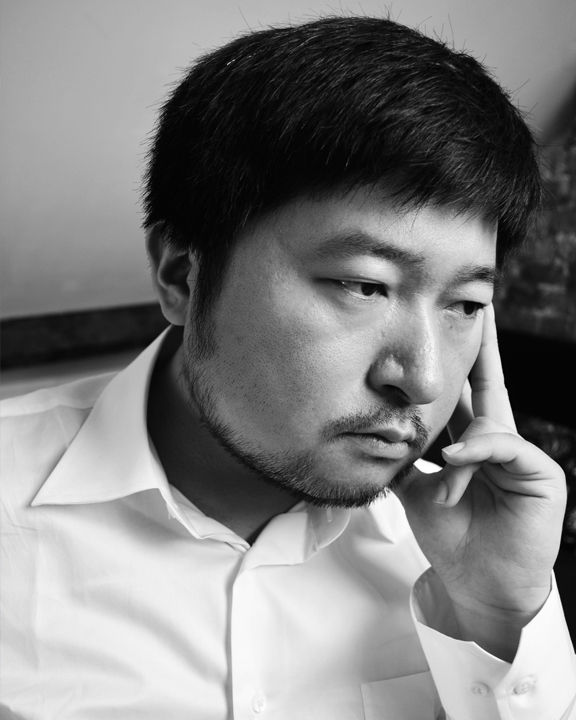
To read more, grab a copy of our August 2023 issue or click here!
FACT FILE
Client: MREGINA
Interior Design: SpActrum
Design Director: Yan Pan
Area: 712 sqm
Design Team: Hao Chen, Zhen Li, Yimeng Tang, Yijie Zhang,
Xiao Wan, Jinyu Wan, Yiran Pan
Lighting Design: Xiaohao Guan
Special Curved Surface Construction: EGrow
Overall Contractor: Beijing Jinghui Decoration Engineering Co., Ltd.
Customized Space Music: Beijing Beibai Music Culture Co., Ltd.
Photography & Videography: SFAP
Drawings & Illustrations Copyright: SpActrum
Year of Completion: January 2023
